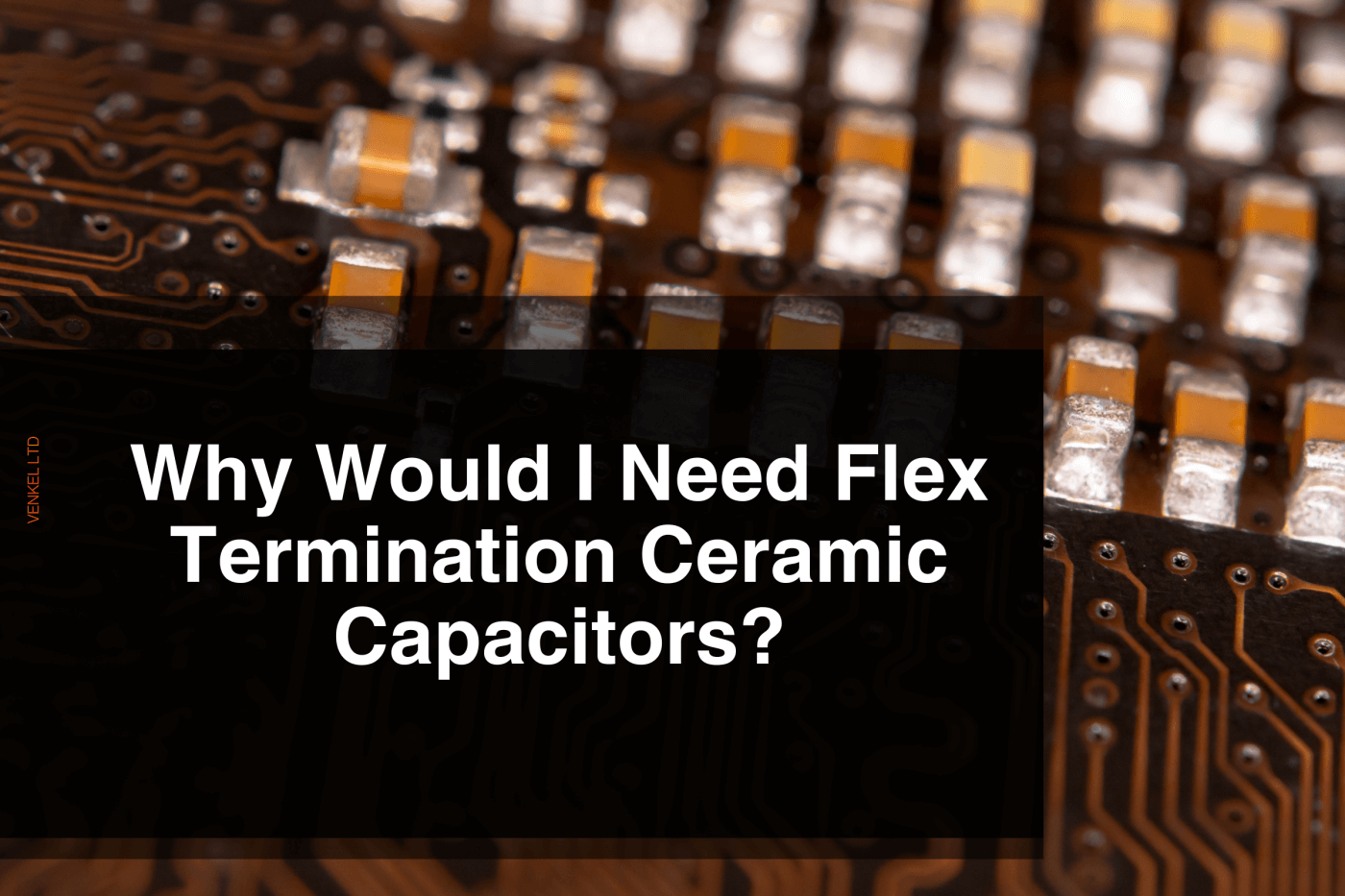Enhancing Reliability in Electronic Applications with Flex Termination Ceramic Capacitors
a soft termination system that reduces the transfer of board stress to the capacitor, reducing the likelihood of flex cracks which often result in low IR or short circuit failures.
In the demanding world of electronic design, the durability and reliability of components are as crucial as their electrical performance. Among the myriad of innovations aimed at improving component resilience and reliability, flex termination ceramic capacitors stand out for their ability to withstand mechanical stresses and vibrations. This blog post explores the significance of these capacitors across various applications, highlighting their role in ensuring the longevity and reliability of electronic systems.
The Role of Flex Termination Ceramic Capacitors
Flex termination ceramic capacitors are engineered to address a common failure mode in surface mount ceramic capacitors: mechanical cracking. Traditional ceramic capacitors, while excellent in electrical performance, are solid blocks of Barium Titanate (BaTiO3) and are susceptible to cracking due to an applied mechanical stress such as bending or flexing of the PCB, vibrations, excessive solder, or thermal expansion mismatches. Flex terminations incorporate a layer of conductive material, typically a conductive Polymer, that is more pliable than standard terminations, reducing the likelihood of flex cracks that often lead to low I.R.(Insulation Resistance) or dead shorts in the circuit. This soft termination system and controlled design significantly enhances the mechanical robustness of the capacitor without compromising its electrical characteristics.
Key Applications
- Automotive Electronics:
Vehicles are a nexus of vibration and mechanical stress, from the engine to the road. Flex termination capacitors thrive in this environment, ensuring reliability in critical systems like engine controls, airbags, and infotainment systems. - Aerospace and Defense Electronics:
The extreme conditions of aerospace and defense applications, from the shock of a missile launch to the vibrations of an aircraft, demand components that can survive without failure. Flex termination capacitors are integral in avionics, radar, and communication equipment, where failure is not an option. - Industrial Electronics:
Industrial settings are rife with machinery and equipment generating vibrations and mechanical stresses. In such environments, the durability of flex termination capacitors makes them ideal for power supplies, motor drives, and control systems. - Medical Devices:
The reliability of medical equipment, especially portable devices used in ambulatory settings, is paramount. Flex termination capacitors are chosen for their ability to withstand mechanical stress in patient monitoring devices and portable medical equipment. - Consumer Electronics:
The frequent handling and mobility of consumer electronics like smartphones, tablets, and gaming devices introduce mechanical stresses that can lead to component failure. Flex termination capacitors help mitigate these risks, ensuring device longevity. - Renewable Energy Systems:
The mechanical vibrations inherent in solar inverters and wind turbines require components that can endure such conditions. Flex termination capacitors offer the reliability needed for renewable energy systems. - Telecommunications Equipment:
Telecommunications infrastructure faces environmental factors and installation procedures that can induce mechanical stresses. The use of flex termination capacitors in these applications helps ensure uninterrupted service. - Power Electronics:
In power electronic circuits, where capacitors play critical roles in filter networks or as energy storage components, the presence of mechanical vibrations can be a concern. Flex termination capacitors enhance the reliability of these systems.
Selecting the Right Capacitor
The choice of a flex termination capacitor over a standard ceramic capacitor is driven by the need for mechanical reliability in the face of a potential applied mechanical stress or vibration. However, the decision to use these specific types of capacitors should be based on a thorough analysis of the application's specific requirements, operating conditions, component placement, and environmental considerations. Factors such as the nature and frequency of mechanical stresses, the operating temperature range, and the electrical performance requirements should all be considered. For more information about
Conclusion
Flex termination ceramic capacitors represent a significant advancement in the quest for more reliable electronic components. By mitigating the risk of mechanical failure, these capacitors enhance the durability and longevity of electronic systems across a broad spectrum of applications. From the harsh environments of automotive and aerospace to the delicate requirements of medical devices and consumer electronics, flex termination capacitors ensure that electronic systems remain robust and reliable, even under stress.
As technology continues to evolve and the demands on electronic components grow, the importance of innovations like flex termination capacitors cannot be overstated. For designers and engineers, understanding the benefits and applications of these capacitors is crucial in developing systems that not only meet today's requirements but are also prepared for the challenges of tomorrow.





